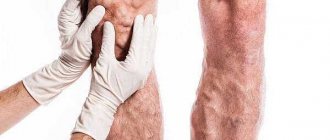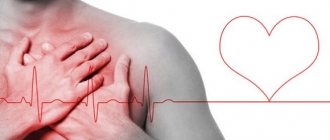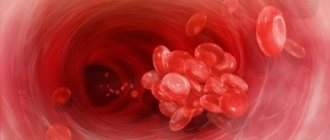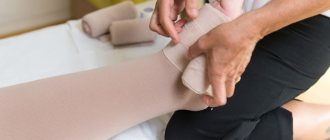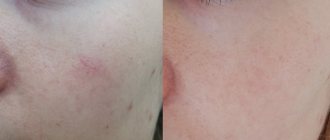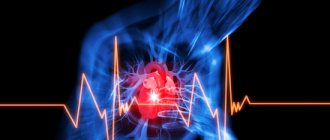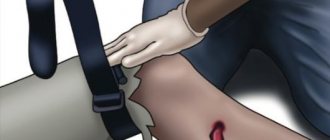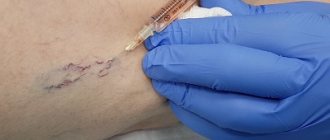Do you feel cramps in your legs? Do you wake up at night with sharp muscle pain? Let's look together at the main causes of seizures and answer frequently asked questions.
What are leg cramps?
A cramp is a sudden contraction of a muscle that does not relax for a variable period of time. Spasm, like pain, can be felt for both a long and short period of time. Muscle spasms arise from a large mass of accumulated decay products released when a vessel is compressed.
Causes of cramps at night
Our phlebologists note several sources that contribute to the occurrence of seizures:
The first source: disruption of normal blood flow in the lower extremities. This is explained by the fact that when blood stagnates in the vessels, the pressure in the veins begins to increase, fluid is released from the vein and spreads to the surrounding tissues. With the fluid, trace elements necessary for natural muscle contraction, such as sodium, calcium and potassium, are released from the blood. The reaction of this is a spontaneous and strong contraction with pain - this is how convulsions occur.
The second reason: the patient suffers from varicose veins. At night, blood flow in the veins slows down, and the body returns to its calm state. And with varicose veins, the process of slowing blood circulation slows down by half. In this regard, the muscles undergo impulse contractions, trying to help the heart push blood through the veins.
The third reason: the ATP mechanism fails. So that at the moment of contraction the muscle can assume a calm state, it is supposed to relax. The body has an element responsible for this action - ATP molecules. If the blood stagnates, the production of ATP is significantly reduced. This means that the ATP mechanism fails.
Causes of lower limb cramps
Leg cramps can have a variety of causes:
- Arterial blood flow deficiency. With pathology of arterial vessels, insufficient blood supply leads to the development of leg cramps even after minimal exertion.
- Compression of nerve trunks. Spinal diseases are often accompanied by leg cramps, which is associated with physical activity or changes in body position.
- Violation of mineral metabolism. A deficiency of potassium, calcium or magnesium in the body can cause leg cramps.
- Varicose veins. Varicose veins of the lower extremities lead to the development of congestion in the tissues, which causes cramps in the legs.
Leg cramps during pregnancy
Pregnancy is a happy and challenging time. When hormonal changes occur, weight gain and decreased activity. A woman develops varicose veins.
Muscle spasms should be given special attention because they are an anxiety disorder. Cramps indicate a lack of microelements, excess fluid loss (for example, a period of toxicosis). The increasing size of the uterus can put pressure on the inferior vein. At the first manifestations of cramps, you should immediately go to the doctor so that a specialist can identify and help eliminate the cause of night cramps as soon as possible.
Treatment
Depending on the diagnosis and further treatment, the attending physician prescribes medications. Some make up for the lack of vitamins and microelements - they influence the cause of the disease, others relieve spasms and improve well-being - symptomatic therapy is carried out. They are used together, complementing each other.
The most popular medications for treating calf muscle cramps are:
- Tablets containing microelements - Asparkam, Panangin, Magnerot, Magnelis B6.
- Vitamins - popular are Complivit, Alphabet, Calcium D3
- Ointments - Venuron, Venarum, Heparin ointment, Diclofenac. They affect the veins, improve blood circulation in the legs and relieve pain.
In addition to medications, physiotherapeutic methods are used, such as electrophoresis, magnetic therapy, laser therapy, ion therapy and others.
How to stop night cramps
When a patient wakes up from severe pain, the first thing he does is try to rub the sore spot. Unfortunately, this method does not always work. Phlebologists recommend doing the following:
1. While lying down and feeling pain in the calf muscle, pull your foot towards you and stretch the muscle. After you have managed to relieve the cramps, work out both lower limbs, alternately pulling them towards you. This way you will resume blood circulation in the vessels.
2. The easiest way is to use a pin or needle. Inject yourself where the muscle is compressed. If you don’t have anything prickly on hand, you can simply pinch your leg in the shin.
3. Try to stand on the bare, cool floor and walk around. When you feel your muscles relax, stand on the floor for a couple more minutes, shifting from foot to foot. This simple exercise quickly awakens the blood and improves blood circulation.
Diagnostics and therapy
What to do if a leg cramp starts ? After you have carried out manipulations to eliminate the cramp, you need to think: what is causing this? If this happens to you frequently, you should consult a therapist. He will prescribe a list of tests:
- A clinical blood test that allows you to see any inflammatory changes, a decrease in the number of red blood cells, and gain a complete understanding of your problem.
- Blood sugar test to rule out diabetes.
- Urine examination - to determine a malfunction of the kidneys - the organ that controls the water and electrolyte balance of the body.
- Ultrasound of veins - to evaluate hematopoiesis and determine whether there is venous insufficiency.
Most likely, based on these data and after the examination, some more examinations will need to be done, but only the therapist will decide this. Based on a complete study, he will refer you to a highly specialized doctor who will prescribe complete treatment.
Prevention of night cramps
To limit yourself from experiencing night cramps, our phlebologists recommend:
- add vitamins such as calcium and magnesium to your menu;
- consume dairy products;
- eliminate smoking;
- choose the right shoes - provide low heels;
- avoid excessive stress on the lower limbs;
- Consume caffeine and strong tea in small quantities.
Contrast baths before bedtime have a positive effect as a preventive measure against cramps, helping to naturally strengthen the walls of the veins.
Muscle spasm
Probably every person has experienced muscle cramps at some point. In medical parlance, this condition is called “muscle spasm.”
Our muscles are constantly under tension; Thanks to muscles, our body moves, maintains its shape, muscle contractions ensure the functioning of many internal organs and systems of the body. But sometimes muscles contract unnecessarily, involuntarily, and such contraction can be painful. The spasm can affect any skeletal muscle of the musculoskeletal system, but the gastrocnemius muscle (the muscle of the back of the lower leg) and the thigh muscles are most often affected.
The muscle can cramp during increased stress (for example, when playing sports) or at rest (when sitting at a computer or while sleeping).
Causes
If your legs cramp, the cause is associated with hyperactivity of the brain, disruption of the conduction of nerve fibers of the muscles, or a decrease in the content of ATP in the blood. The development of these processes is facilitated by:
- Excessive physical activity.
- Suffered traumatic brain injury.
- Impact of stress factors.
- Using uncomfortable shoes.
- Flat feet.
- Chronic intoxication of the body with medications and chemicals.
- Recently undergone anesthesia (during it, medications are used - muscle relaxants, the effect of which may have complications in the form of involuntary contractions).
- Exhaustive diet.
- Dehydration of the body.
Other causes of muscle spasms are blood loss, hypovitaminosis, a sharp transition from high to low temperature, or vice versa.
Types of seizures
If involuntary contraction of muscle fibers is caused by overexcitation of the cortical part of the brain, such convulsions are classified as epileptic. Non-epileptic ones are provoked by diseases of the central nervous system, imbalance of nutrients, and unfavorable external conditions.
Also, involuntary muscle contractions can be classified according to their nature:
- tonic – long-term, turning into a state of tension;
- myoclonic – short;
- clonic - jerky, cyclically repeating and alternating with relaxation.
Based on localization, these phenomena are divided into generalized and local. The former cover a significant part of the body (arms, legs, face, neck, side, torso, and sometimes extend to the respiratory tract). The latter occur in separate areas (for example, only in the back or only in the buttock).
Diagnosis, treatment and prevention of seizures
You should eat enough foods containing magnesium.
If you have regular seizures that have been bothering you for a long time, do not put off visiting a doctor. First, you should visit a therapist (if seizures occur in a child, then a pediatrician), who will conduct an examination, prescribe the necessary examination and, if necessary, recommend consultations with specialists of a narrow profile - a neurologist, endocrinologist, cardiologist, nephrologist and others.
If the cause of seizures is any somatic pathology, then with adequate treatment, the problem of sudden muscle contractions will soon be resolved.
If the results of the examination show that there are no serious diseases that could provoke seizures, the doctor will give the patient recommendations, if followed, his condition will improve in the near future.
- Proper nutrition.
- It is necessary to divide the daily diet into 5-6 meals, and the portions should not be voluminous.
- The basis of the diet should be complex carbohydrates - cereals, durum wheat pasta, vegetables and fruits.
- Fats also take part in the mechanism of proper muscle contraction - a small piece of butter or fatty red fish will enrich the body with this essential nutrient.
- Don’t forget about foods rich in magnesium (nuts, legumes, carrots, greens, seaweed), potassium (bananas, dried apricots, melon, potatoes), calcium (milk and dairy products), B vitamins (dairy products, walnuts , red fish).
- A healthy lifestyle (adequate physical activity, avoiding heavy loads on the legs, quitting smoking).
- Sleep in a comfortable bed in a position with your legs slightly elevated above the axis of your torso and head.
- Taking relaxing foot baths with sea salt - dissolve 3 tablespoons of sea salt in 5 liters of water at room temperature.
- Massage your feet with warming ointment or cream before bed.
- Refusal of uncomfortable shoes, high heels (shoes should be comfortable for your feet, the height of a stable heel should not exceed 4-5 cm).
- If you have chronic venous insufficiency, wear compression stockings and tights (the degree of compression of these things can be different - to choose the right one, consult a phlebologist).
- Treatment of flat feet, including wearing orthopedic shoes and/or special insoles.
- Taking medications containing multivitamin and mineral complexes (calcium-D3-Nycomed, Magne-B6, asparkam).
First aid for relieving an attack
In the first seconds, panic may set in, especially if convulsions have not occurred before. It needs to be controlled. Spasms are not life-threatening and can be eliminated quite simply.
- It is important to relax contracted muscles. To do this, you need to move your legs: lower them from the bed to the floor, rotate your feet.
- To relieve severe pain and restore blood flow, it is recommended to rub and massage your legs with your palms.
- If the attack is very sharp, you can prick the affected area with a pin or pinch with your nails. This will cause a reflexive release of the spasmed muscles. The method helps relieve cramps when in water, when every second is important.
- If the spasm affects the feet, you need to walk on the floor with bare feet. Coolness will help restore nerve impulses. It is recommended to do several exercises: standing, roll from toes to heels and back, take a few steps on the inside, then on the outside of the soles, tuck and straighten your toes.
At home, to relieve pain, it is useful to take a contrast shower, pouring alternately warm and cool water on your feet. After the cramps have subsided, it is useful to lie on your back for a while, using support for your legs above the level of your head.
Sources
- Luo L., Zhou K., Zhang J., Xu L., Yin W. Interventions for leg cramps in pregnancy. // Cochrane Database Syst Rev - 2021 - Vol12 - NNULL - p.CD010655; PMID:33275278
- Crisponi G., Nurchi VM., Cappai R., Zoroddu MA., Gerosa C., Piras M., Faa G., Fanni D. The Potential Clinical Properties of Magnesium. // Curr Med Chem - 2021 - Vol - NNULL - p.; PMID:33200694
- Lorenzo M., Schaeffer M., Haller DM., Maisonneuve H. Treatment of nocturnal leg cramps by primary care patients over the age of 60. // Fam Pract - 2021 - Vol35 - N1 - p.29-33; PMID:28985304
- Roguin Maor N., Alperin M., Shturman E., Khairaldeen H., Friedman M., Karkabi K., Milman U. Effect of Magnesium Oxide Supplementation on Nocturnal Leg Cramps: A Randomized Clinical Trial. // JAMA Intern Med - 2021 - Vol177 - N5 - p.617-623; PMID:28241153
- Kakkos SK., Allaert FA. Efficacy of Ruscus extract, HMC and vitamin C, constituents of Cyclo 3 fort®, on improving individual venous symptoms and edema: a systematic review and meta-analysis of randomized double-blind placebo-controlled trials. // Int Angiol - 2017 - Vol36 - N2 - p.93-106; PMID:28225220
- Martinez-Zapata MJ., Vernooij RW., Uriona Tuma SM., Stein AT., Moreno RM., Vargas E., Capellà D., Bonfill Cosp X. Phlebotonics for venous insufficiency. // Cochrane Database Syst Rev - 2021 - Vol4 - NNULL - p.CD003229; PMID:27048768
- Zhou K., West H.M., Zhang J., Xu L., Li W. Interventions for leg cramps in pregnancy. // Cochrane Database Syst Rev - 2015 - Vol - N8 - p.CD010655; PMID:26262909
- Orlin JR., Øen J., Andersen JR. Changes in leg pain after bilateral fasciotomy to treat chronic compartment syndrome: a case series study. // J Orthop Surg Res - 2013 - Vol8 - NNULL - p.6; PMID:23561303
- Allen RE., Kirby KA. Nocturnal leg cramps. // Am Fam Physician - 2012 - Vol86 - N4 - p.350-5; PMID:22963024
- Hallegraeff JM., van der Schans CP., de Ruiter R., de Greef MH. Stretching before sleep reduces the frequency and severity of nocturnal leg cramps in older adults: a randomized trial. // J Physiother - 2012 - Vol58 - N1 - p.17-22; PMID:22341378
